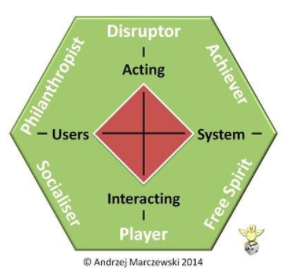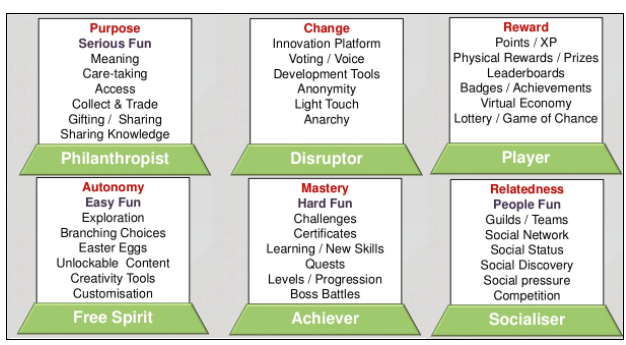According to Marczewski (2014), there are six user types as shown in the figure below:
- Philanthropists are a group of people who are altruistic in nature. It means that they have a giving nature without expecting reward in return.
- Disruptors are the people who believe in change. They disrupt the system forcibly to imbibe positive or negative change.
- Players have a sole connection with rewards as they believe in collecting rewards, prize or achievements for themselves.
- Free Spirits have a relation with autonomy in which they explore or be creative in nature.
- Achievers have a motivational link with mastery where they look forward to learn new things and improve on their skill sets.
- Socialisers are linked with relatedness where they can build teams and form a social circle for improving connection and networking.
Gamification technique helps the students have more fun in the classroom. It creates a relaxed atmosphere where failure gives the students a second chance. There are progress indicators which can be assessed by the students thereby locating their weak areas. The students can increase their creativity and prompts behavioural change. The learners can practice real-life challenges and situations in an informal manner that facilitates knowledge and experience. The suitability and applicability to all age groups can provide the students with a sense of achievement.



 RSS Feed
RSS Feed
